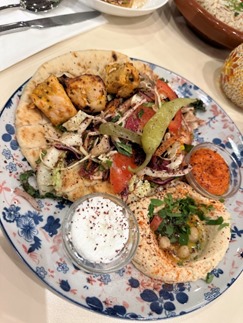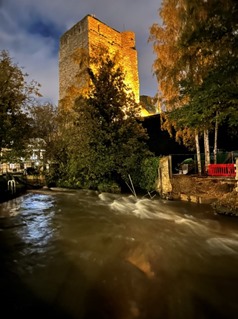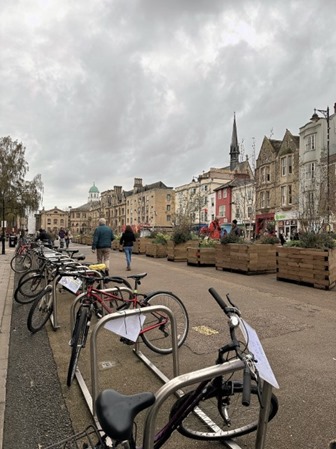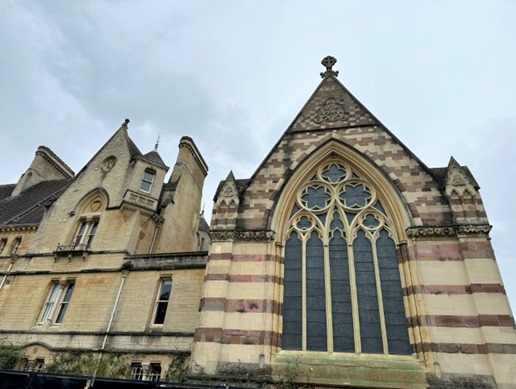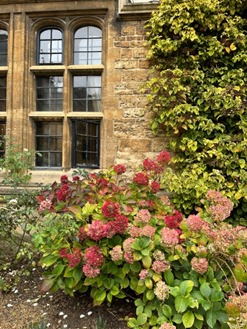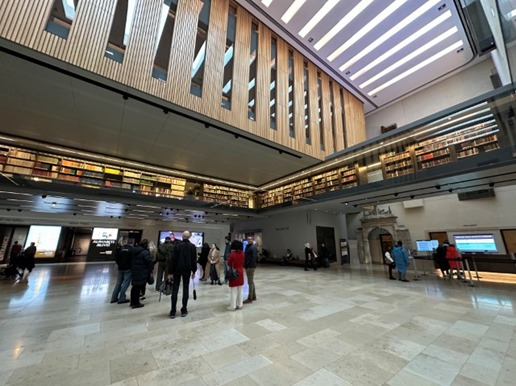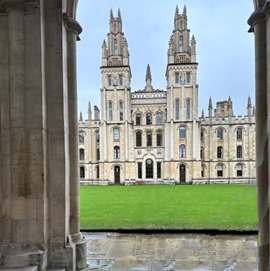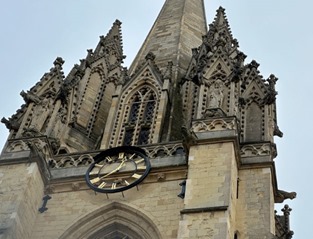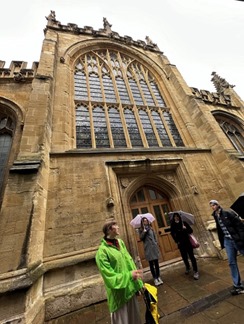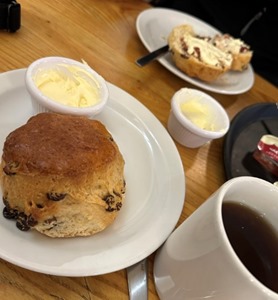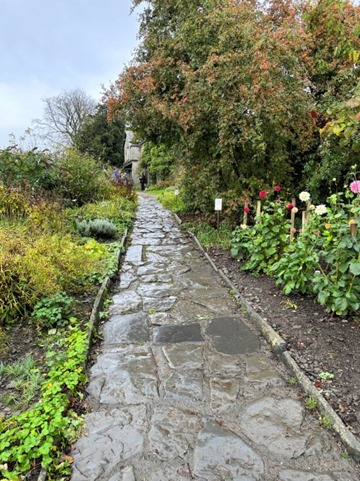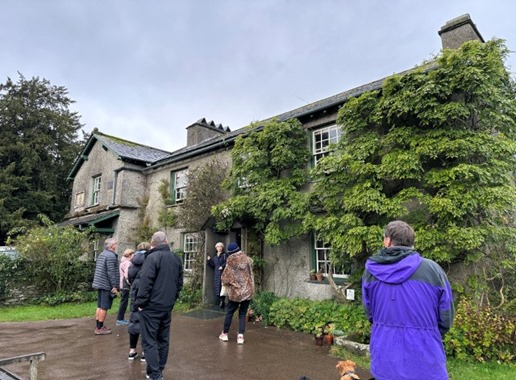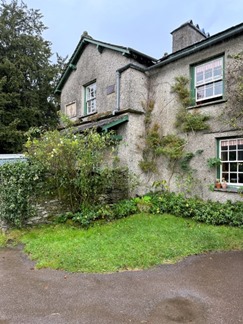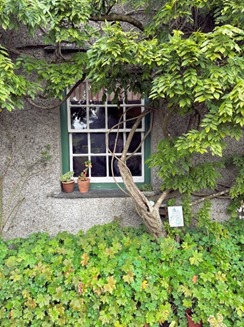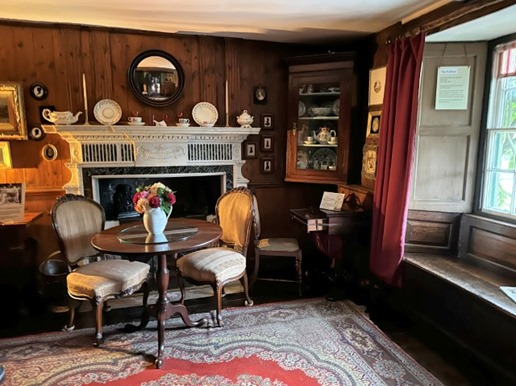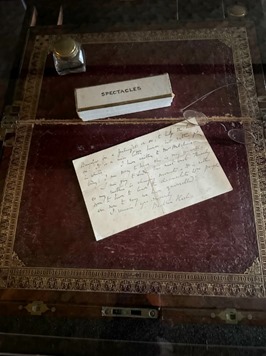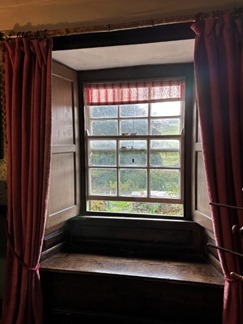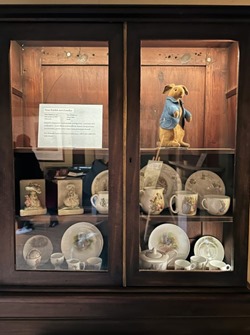We arrived in Oxford in the late afternoon on a Saturday. Since the Europcar office closed at 1 pm on Saturdays, it was a bit of a hassle returning our car. The printed return instructions were clear, so we dropped the keys in a box and hoped for the best (it turned out OK). We took an Uber to our hotel which was located close to the center of town.
There was a large shopping center just blocks from our hotel. Westgate Center was named for the original West Gate in the city wall. There we found an amazing restaurant, Comptoir Lebanse, for dinner. This was one of the best meals of the trip.
Oxford Castle the next morning
We’d never been to Oxford before, so we signed up for a walking tour of the University.
This is where we started the tour. It began to sprinkle as we waited for the tour to start and then it began to rain, at times it was a downpour. The group struggled to listen to the enthusiastic student guide while dealing with umbrellas and trying not to put anyone’s eye out as we huddled together.
Balliol College
Oxford became home to the University in the 12th century. There is evidence of teaching as early as 1096. It is the oldest university in the English-speaking world. The University is made up of 39 colleges, each one is self-governing and has its own structure and activities.
Oxford does not have a main campus. The university is a collection of buildings and facilities scattered throughout the city center.
Trinity College
We got to go in here.
The New Bodleian Library, called the Weston Library, opened in 2015.
The Bodleian Library is the second-largest library in the U.K. with over 11 million volumes housed on 120 miles of shelving!
It would have been fun to just stay here out of the rain and explore.
The Sheldonian Theatre, across the street, was built by Christopher Wren in 1668. The university holds concerts and ceremonies there.
We continued our walk in the rain to the original building of the Bodleian Library.
The Divinity School is on this courtyard. The first library of the university was above the Divinity School. It became the Bodleian in 1598 when Sir Thomas Bodley refurbished the library and made provision for its future. We could not enter the library but were able to go into the Divinity School.
Built between 1424 and 1483, this is one of the oldest surviving purpose-built rooms at Oxford University. Theology was taught in this room and examinations were held here from the 15th to the 19th century. It is now part of the Bodleian Libraries.
The Divinity School is a popular site for weddings, events, and films. Three of the Harry Potter films were shot here.
The Hertford Bridge, often called the Bridge of Sighs, is a skyway joining two parts of Hertford College.
The Radcliffe Camera, built in 1737-49, houses the Radcliffe Science Library.
All Souls College
University Church of Saint Mary the Virgin
St Mary’s was the first building of the university from at least 1252. The spire was added in the 1320s. In 1630 the church was reserved for religious worship only.
C.S. Lewis, author of the Chronicles of Narnia, was a professor at Oxford from 1925-1954. Our guide pointed out this doorway and lamppost which are said to be his inspiration for parts of the story.
This wall on Brasenose Lane is the oldest wall in Oxford.
That was the end of our very wet tour.
We made our way back to our hotel by way of this Covered Market.
A pleasant surprise, we window shopped and stopped for tea and scones.
It was a shame it was such a rainy day for our visit to Oxford. Weather does make a difference to your impression of a place. We were disappointed that this tour took us inside just a few buildings.
We could have used another day to tour more of the town, but we were off to London by train that afternoon.



